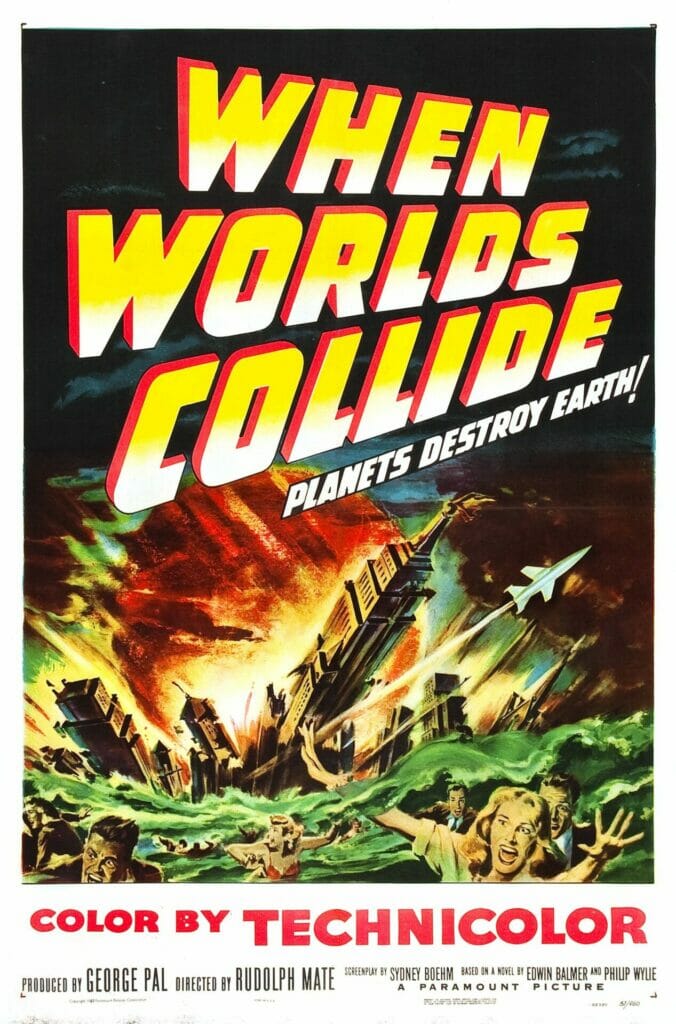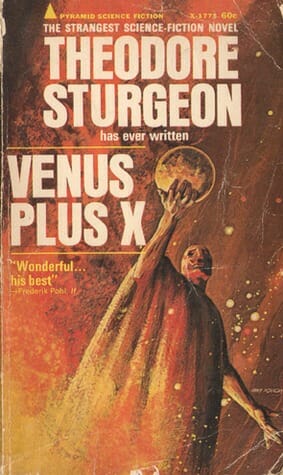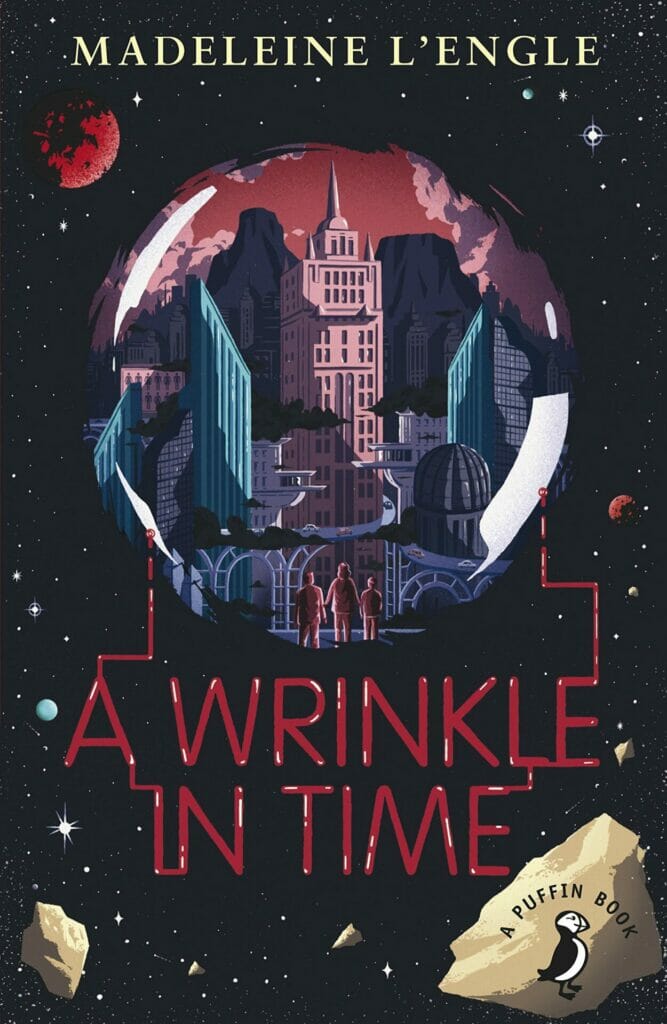Some stories are better read than watched on the big screen or on TV. Many times readers are disappointed after they have read a favorite book or series and then watch the movie. So they feel cheated in some way. Directors are free to develop the vision their own way and readers love to visualize the written word the author has presented. Here is a small list of sci fi books that help help your imagination run wild.

Journey to the Centre of The Earth (1864)
By Jules Verne
Professor Otto Liedenbrock starts on a journey to the center of the earth after discovering old documents that he believes are filled with instructions to help him get there. It’s an epic adventure that’s ahead of its time, and has become a genre all its own.

The War of the Worlds (1889)
By Aldous Huxley
It’s 2540 and babies are cultivated and grown with a pre-programmed destiny. So, Huxley presents this bleak outlook of the future as a system that brings about totalitarianism.

When Worlds Collide (1933)
By Edwin Balmer & Philip Wylie
Two planets, Bronson Alpha and Bronson Beta, are on a collision course towards the Earth. The Earth will suffer catastrophic damage due to the gravitational force of the two planets. Bronson Beta is found to be livable, so it’s time for an epic evacuation.

Odd John: A Story Between Jest and Earnest (1935)
By Olaf Stapleton
This is a novel about a superhuman and his conflict with humanity.

Nineteen Eighty-Four (1949)
By George Orwell
This dystopian novel tells the disturbing tale of Big Brother watching and a listening. Siri and Alexa hit a nerve anyone?

Earth Abides (1949)
By George R Stewart
After World War II, a man comes out of his solitary life only to realize that the world he left behind has completely disappeared.

Foundation (1951)
By Issac Asimov
After the Galactic Empire collapses, Foundations is created by a mathematician to preserve all the best of the civilization. The book contains five short stories which explains how 2 groups of scientists and engineers live and work at opposite ends of the galaxy to ensure preservation.

The Illustrated Man (1951)
By Ray Bradbury
There are 18 short stories in The Illustrated Man. A traveler has his entire body tattooed and realizes the tattoos can reveal the future. Many say this book shows Bradbury’s best imaginative writing.

The Demolished Man (1953)
By Alfred Bester
This novel is a fictional 24th century police procedural story where telepathy is a common investigative tool. So it shows the ins and outs of trying to solve a murder case using telepathy (which the results are inadmissible in court) and solving it the old fashioned way.

Ring Around the Sun (1953)
By Clifford D. Simak
Another invasion novel from the 1950’s, Simak writes of people vanishing in a world where inventors lure people with goods that never wear out, which over time causes Earth’s economic destruction.

Mission of Gravity (1954)
By Hal Clement
This story takes place on the planet Mesklin, where the gravitational force varies from pole to pole. A human explorer arrives and meets the Mesklinites, who are a centipede-like life form. The novel shows adventure and cooperation between species, even if on a small scale, as each are trying to secure trust in each other.

The Long Tomorrow (1955)
By Leigh Brackett
Following the end of a nuclear war, a young man sets out on an adventure for survival in a world where a city’s size and the number of buildings is restricted. So powerful religious sects insure that any kind of technology is strictly forbidden. Things become complicated and alarming when he meets other young people.

The Chrysalids (United States title: Re-Birth) (1955)
By John Wyndham
British author Wyndham writes about a world where a “Tribulation” has occurred to punish a generation for past sins of the “old people.” Telepathy is now considered to be among the mutations that the community of the Unknown is plotting to destroy. So it’s a society that practices eugenics and people who are proven to have mutations will be killed, sterilized, and/or banished. But still there are those who still dream of large cities and “horseless cars.”

The Death of Grass or No Blade of Grass (1959)
By John Christopher
A virus attacks and kills all species of grass, including rice, wheat, barley, and oats. There is no livestock and starvation is imminent. Governments are contemplating using nuclear bombs to destroy major cities rather than allow a slow starvation and misery on the inhabitants. The attacks cause large-scale starvation in China and the same is heading towards England. A family tires to escape by leaving London, but their journey gets more perilous by the day as societies everywhere turn into anarchies.

Starship Troopers (1959)
By Robert Heinlein
This novel is a military science fiction about a war between humans and bugs. Heinlein claimed to have written the novel in a few weeks. Some even suggest that the novel is actually a reflection of the author’s belief in fascism.

The Sirens of Titan (1959)
By Kurt Vonnegut
Much of the story revolves around a Martian invasion of Earth. It tells the journey of Malachi Constant from Earth to Titan with stops along the way. It’s said that at a party someone told Vonnegut he should write another novel and he immediately went to another part of the room. And so he wrote out the book in one day with all the thoughts that were in his head at the time.

Alas, Babylon (1959)
By Pat Frank
A nuclear war between the United States and the Soviet Union turns a large portion of the continental US into inhabitable areas. The government calls various major cities “contaminated zones.” America wins the war but at a great cost; the US now receives food and medicine from third world countries. So the message of this book is, there are no winners in a nuclear war.

A Canticle for Leibovitz (1959)
By Walter M. Miller
Here’s another post-apocalyptic future where monks are on a mission to preserve important books and humanity in general. The question is about how many times humanity can be preserved.

Venus Plus X (1960)
By Theodore Sturgeon
Charlie Johns, a man of the 20th century, wakes up and finds himself in a strange world. He believes he has been transported into the future. The new place is overpopulated and there is no gender.

Solaris (1961)
By Stanislaw Lem
Solaris tells the story of communication attempts between humans and extraterrestrial life. While humans story a planet known as Solaris, the planet studies and affects the researchers at the same time.

A Wrinkle in Time (1962)
By Madeleine L’Engle
With witches, crystal balls, and New Age spiritualist theme, the children’s novel makes the list of American Library Association’s 100 Most Frequently Challenged Books in 1990-2000.

The Drowned World (1962)
By J.G. Ballard
After a prolonged solar radiation, the ice caps melt and render most of the planet Earth uninhabitable. So most of the population migrates to the poles, which have now become hospitable.

Dune (1965)
By Frank Herbert
A substance, available on planet Arrakis, has been found capable of making people live longer. So everybody fights over it.

Make Room! Make Room! (1966)
By Harry Harrison
In times when 1999 is the future, Harrison imagines a world destroyed by unchecked population growth. The novel tells various stories from the perspective of multiple characters in New York City.

Do Androids Dream of Electric Sheep? (1968)
By Philip K. Dick
A man hunts down escaped androids in a post-apocalyptic world. The books takes a look at how humans and androids are really not that different from each other yet not exactly the same either.

The Left Hand of Darkness (1969)
By Ursula K. Le Guin
An ambassador travels to a world that contradicts his views of gender and sexuality. This book is considered among the first to carve a path for feminist sci-fi genre.

Behold the Man (1969)
By Michael Moorcock
Behold the Man explores the possibility of the world’s largest religion being incorrectly depicted. A troubled man from the 1970’s takes a time travel back to the past to seek out The Christ and find an answer.

The Hunger Games (2008)
By Suzanne Collins
Every year twelve districts in the rich city of The Capitol, must send a boy and a girl to compete in a televised game of life and death aired all over the city. There are four books in this series of The Hunger Games.

Snowpiercer (2014)
By Jacques Lob, Benjamin Legrand, Oliver Bouquet, and Alexis Nolent
A new class system emerges in the post-apocalyptic world, prompting us to consider climate change and the impending end of the planet.
Do you agree with our choices? Let us know!
If you liked this, then check out 25 Best Sci Fi Adventure Books!







